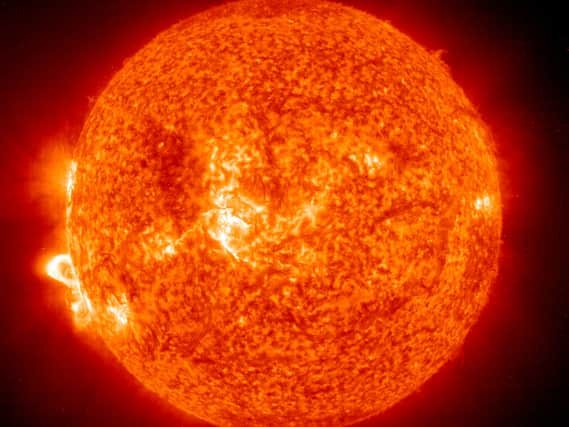‘Cannibal’ solar storm 2022: what are geomagnetic flares, when will storm arrive on Earth - impact explained


From 17 August to 19 August, coronal mass ejections or geomagnetic flares from the Sun could cause disruption to satellites and other important systems.
The National Oceanic and Atmospheric Administration’s Space Weather Prediction Center (NOAA) issued a geomagnetic storm watch on Wednesday (17 August), “due to coronal high speed stream (CH HSS) and coronal mass ejection (CME) influences” with the potential to escalate to G3 conditions.
Here is a breakdown of what this means.
What is a geomagnetic storm?
Advertisement
Hide AdAdvertisement
Hide AdAccording to the NOAA, a geomagnetic storm is defined as a major disturbance of Earth's magnetosphere due to an efficient exchange of energy from the solar wind into the space environment surrounding Earth.


These storms result from variations in the solar wind that produces major changes in the currents, plasmas, and fields in Earth’s magnetosphere.
The solar wind conditions that are effective for creating geomagnetic storms can last for several to many hours of high-speed solar wind, and most importantly, a southward directed solar wind magnetic field - opposite from the direction of the Earth’s field. This condition is effective for transferring energy from the solar wind into Earth’s magnetosphere.
NOAA added: “The largest storms that result from these conditions are associated with solar coronal mass ejections (CMEs) where a billion tons or so of plasma from the sun, with its embedded magnetic field, arrives at Earth.”
Advertisement
Hide AdAdvertisement
Hide AdCMEs typically take several days to arrive at Earth, but have been observed, for some of the most intense storms, to arrive in as short as 18 hours.
What could happen to Earth?
While most of this week’s disturbances are expected to have little to no impact, there is a chance that the expected storm could reach a level of 3 out of 5 on the geomagnetic storm severity scale.
A G3 storm has the potential to interfere with satellite communications, whilst a G5 storm, which is classified as “extreme” could knock out systems for several days.
It could also mean that aurora or northern lights are visible far further south than usual. The activity means that lights could be visible in the sky in Northern England or New York, according to the Met Office.
Advertisement
Hide AdAdvertisement
Hide AdWhile auroras are not uncommon, the likelihood of a collision of multiple coronal mass ejections — a celestial event referred to as “cannibal coronal mass ejections” — has some sky watchers anticipating a brighter than usual light show. The Met Office said ongoing solar events are likely from 18 August into 19 August.
Comment Guidelines
National World encourages reader discussion on our stories. User feedback, insights and back-and-forth exchanges add a rich layer of context to reporting. Please review our Community Guidelines before commenting.
